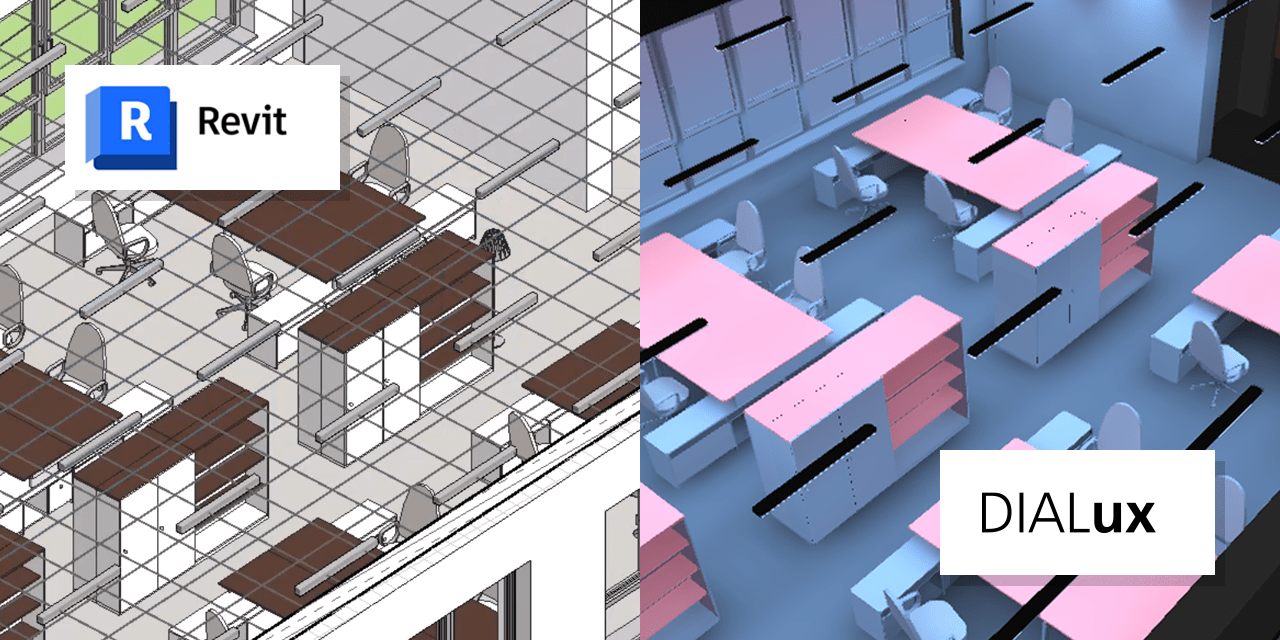
Focused on solutions – beyond black and white thinking in the BIM context
When it comes to Building Information Modeling (BIM), people often distinguish between open BIM and closed BIM. However, at DIALux, we are convinced that this rigid black-and-white thinking rarely helps planners move forward. Instead of getting caught up in formal categorizations, we take a practice-oriented approach focused on the real-world challenges and bottlenecks faced in daily planning.
What exactly does this approach look like – and what solutions are we developing to make planning processes more efficient? Dieter Polle, Managing Director of DIAL, explains in this interview.

Dieter, what does it mean to “open” closed BIM? Can you give an example?
Sure, I’d be happy to. Let’s consider the following realistic case: An architect is designing a project using Revit. Up to now, this would trigger a red alert for the lighting designer. Warning: Closed BIM. Why? Because Revit doesn’t support the open BIM interface, known as IFC, very well. When exporting from Revit and reimporting the file, important information is lost.
These partially poor open interfaces might even be intended to keep the planner inside the Revit ecosystem – hence, closed BIM.
But in a few months, once our work is complete, there won’t be any more red lights. The lighting designer can import the Revit project into DIALux, plan the lighting, and export the result back. They can do this as often as they like. Closed or open BIM? From the lighting designer’s point of view, that distinction no longer exists. In this sense, we are opening up closed BIM.
What exactly is DIAL working on in this context – specifically with Revit?
We are developing a small DIALux plug-in for Revit that significantly improves data exchange. Luminaires coming from DIALux are converted into actual Revit luminaires. For the specialists: these are created as Revit families. The luminaires include all the information required for further processing – enabling a true BIM workflow.
How will this development simplify the planning process?
This is part of a larger development on our side. DIALux is currently being upgraded to handle the entire lighting design process: from the initial concept of the desired lighting effect and the selection of suitable lighting design principles, to prototypical luminaires and product descriptions suitable for tenders, all the way to the actual products that will be installed.
At each phase, the lighting designer should be able to provide information on costs and energy consumption. And they should be able to respond calmly and flexibly to all the changes that naturally arise during the course of a project. No matter what software the architect is using. Whether Revit or Open BIM – it doesn’t matter.
What benefit does this offer to luminaire manufacturers?
Some manufacturers already provide their luminaires in Revit format. Planners can manually place these models in Revit. But that manual effort is no longer necessary. DIALux will soon generate these Revit models automatically when exporting the current design status – and in various levels of detail, too.
DIALux Silver and Gold Members will benefit greatly from this. They can describe their luminaires very comprehensively in DIALux – with images, descriptions, realistic 3D models, and a wide range of technical parameters. All of this information will be embedded in the resulting Revit model.
This is a very compelling reason to consider a Silver or Gold Membership.